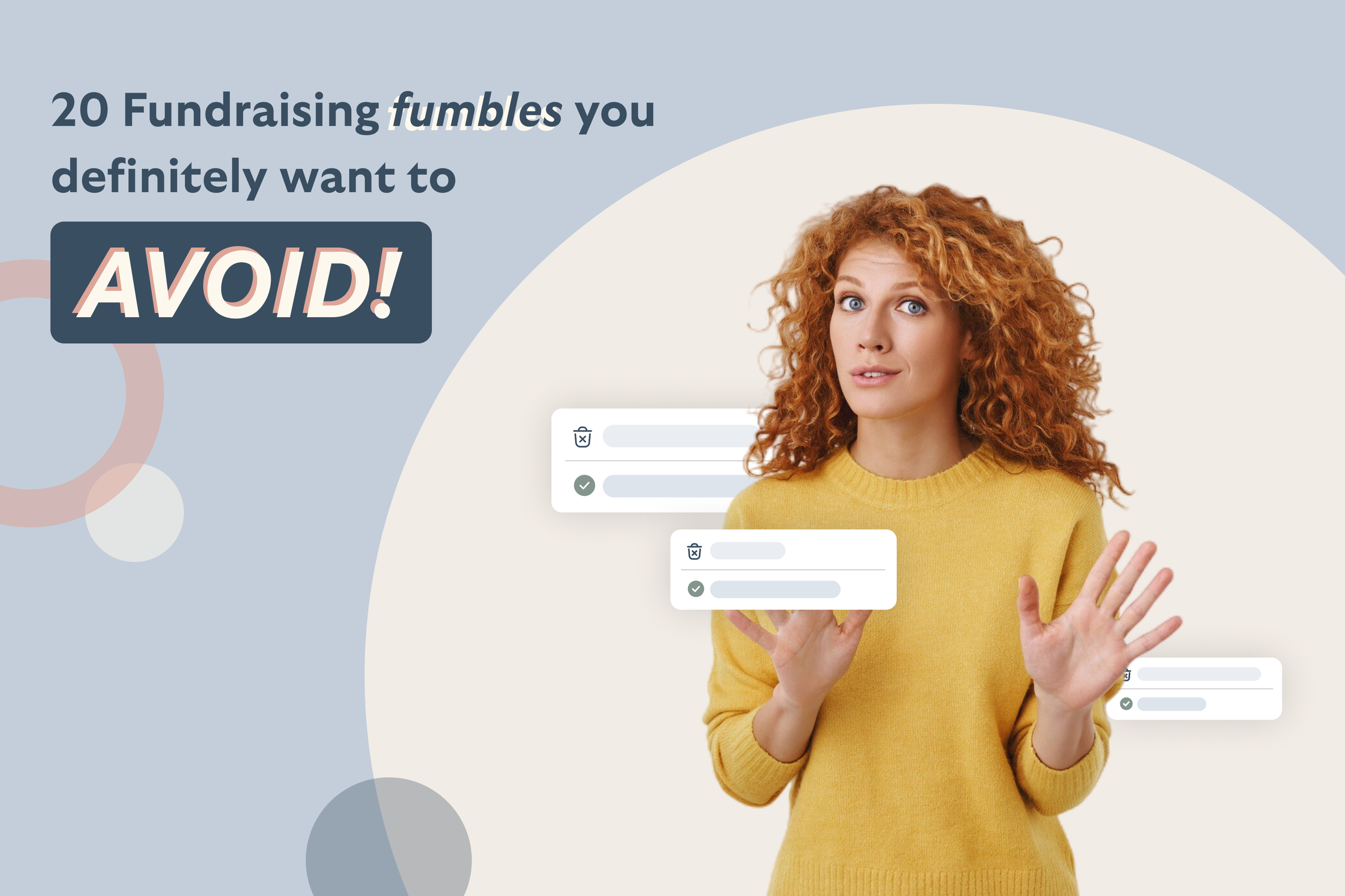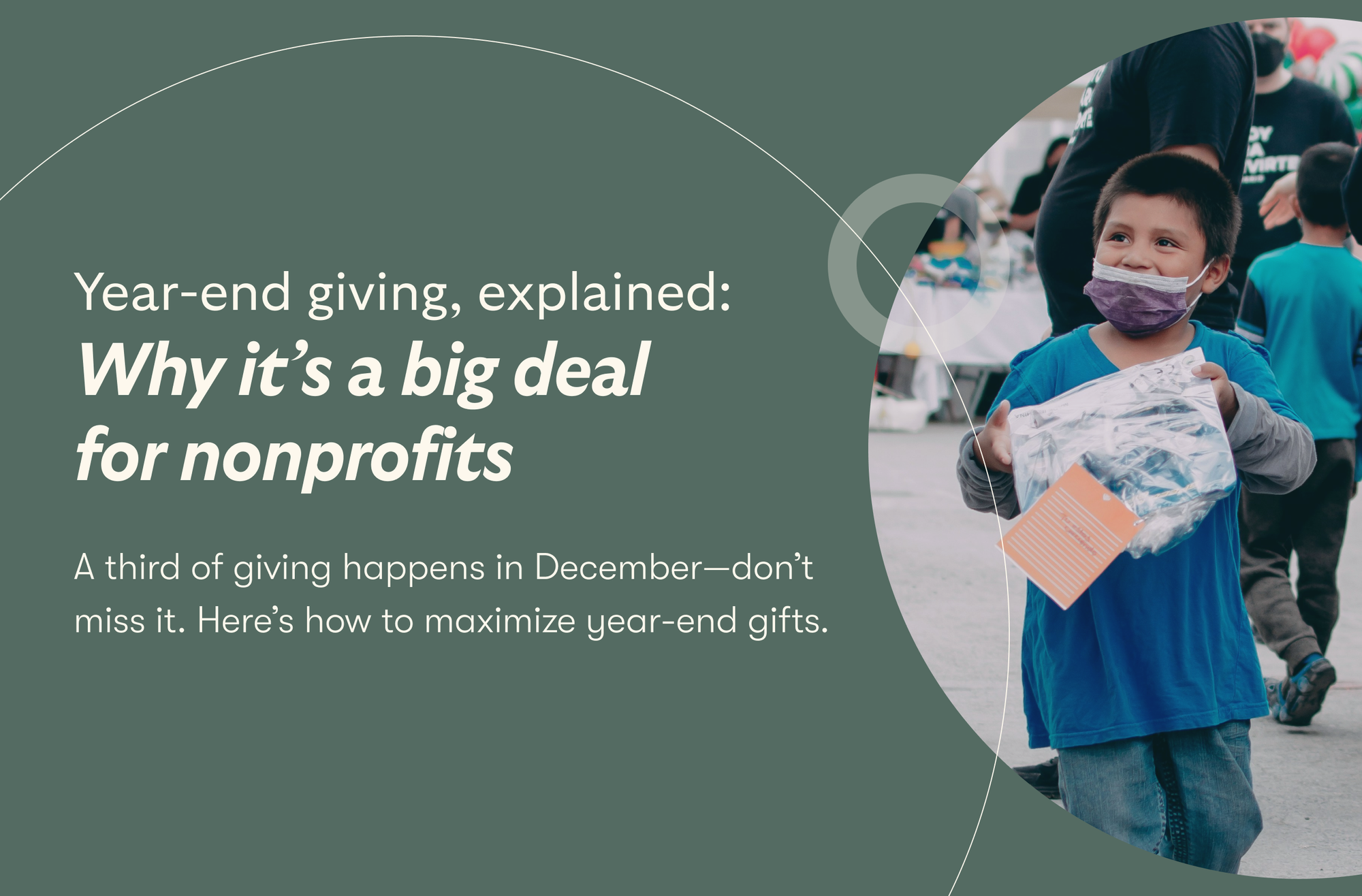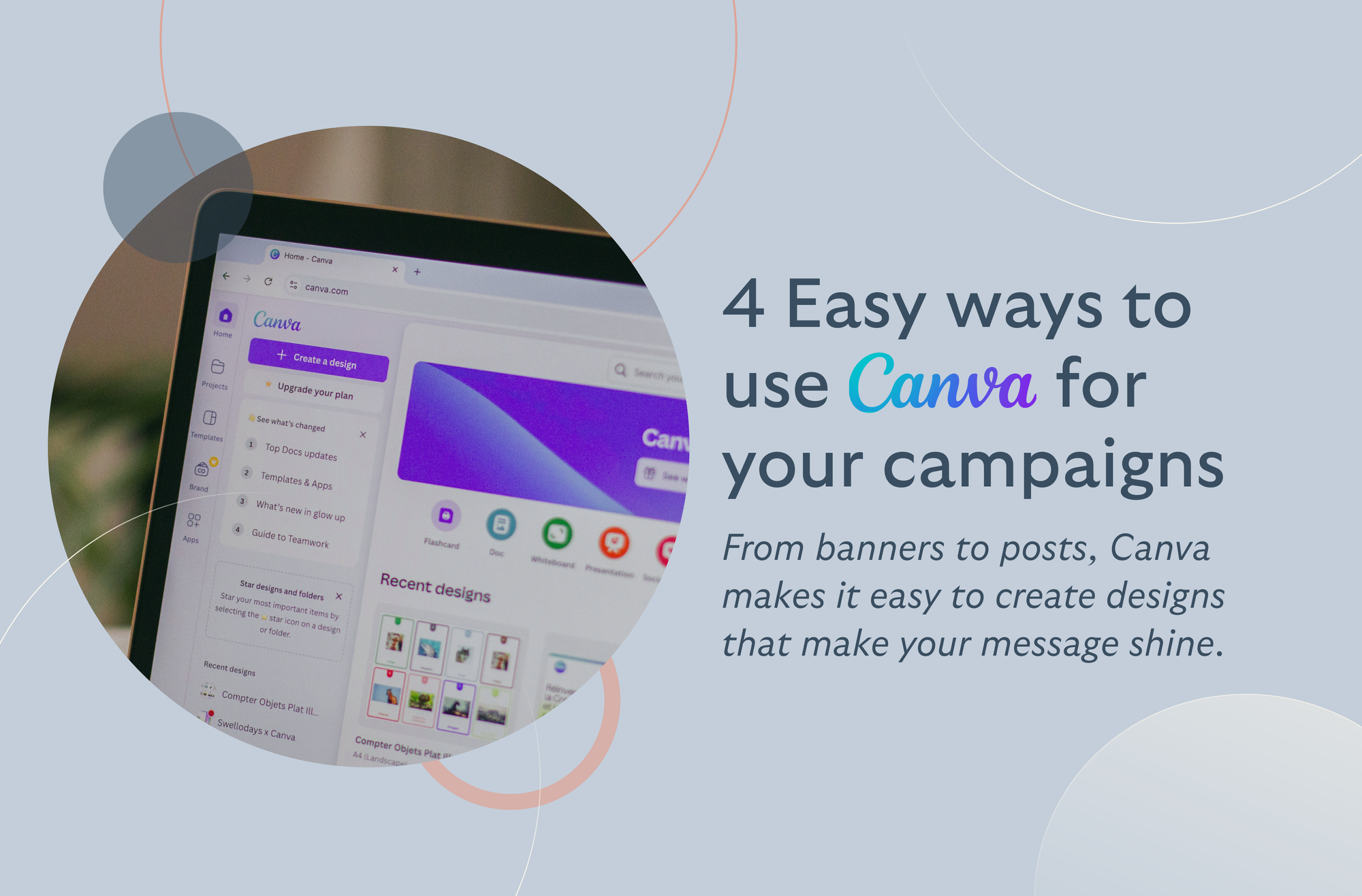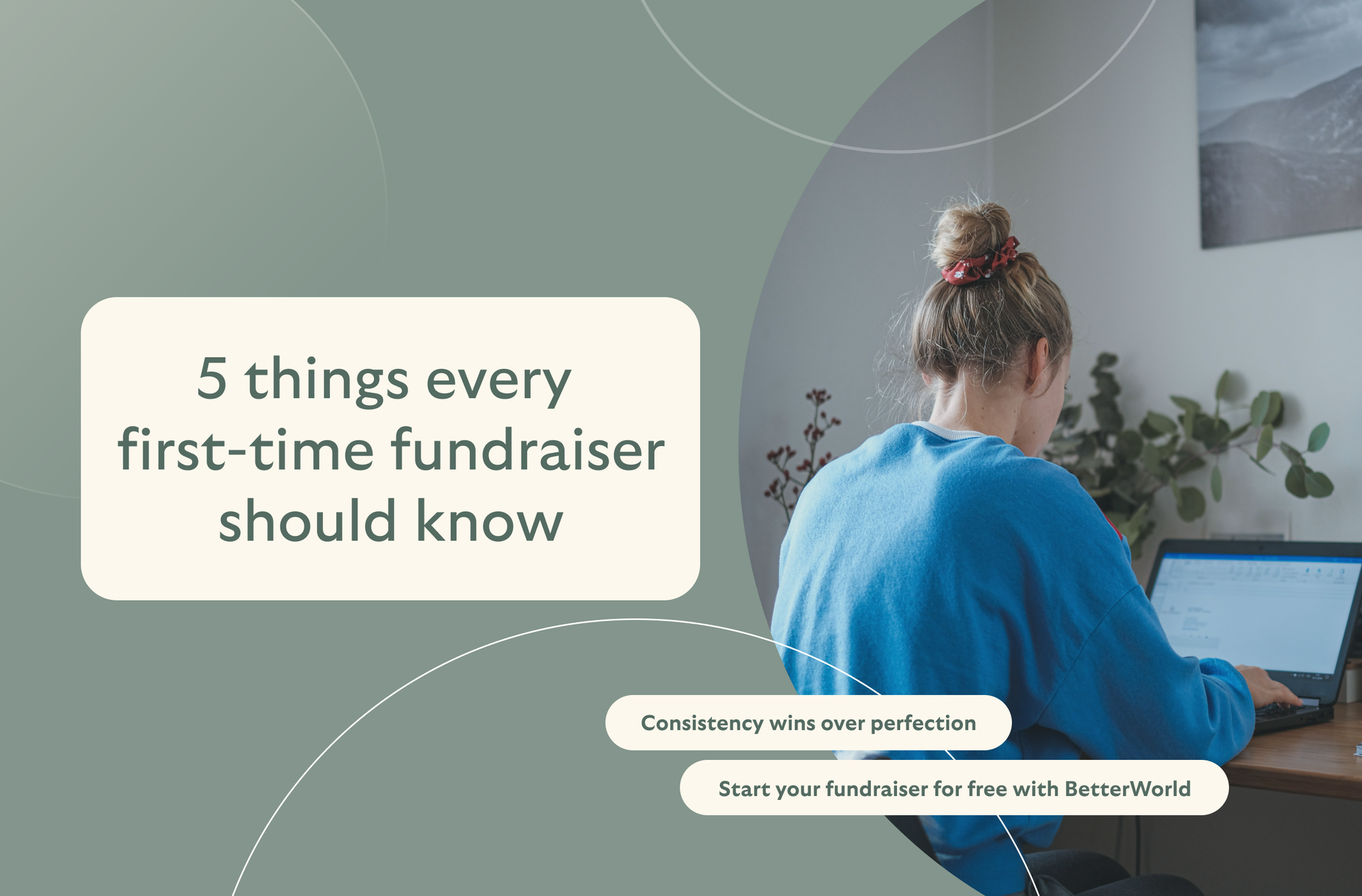Video Integration — boost the buzz around your online fundraising campaign
Time-saving – thoughtful automations save dozens of hours over your campaign
One-Click Checkout — our system will automatically charge the lucky winner
Text Message Notifications — keep your bidders engaged with text message notifications
20 Fundraising Fumbles You Definitely Want to Avoid!
By Colin Hunter

Even the most successful fundraising ideas for nonprofits can sometimes hit a wall. You might have everything planned out, but things don’t always go as expected. The truth is successful fundraising isn’t just about having a great idea- it’s also about anticipating potential pitfalls and preparing for them.
The key is to identify common fundraising mistakes before they happen. Once you spot them, it’s much easier to avoid trouble and have a backup plan ready.
In this blog, we’ll highlight some of the most common fundraising fumbles and provide tips on how to avoid them. Let’s make your next fundraiser foolproof!
1. Overlooking Small Donors
One common fundraising mistake is ignoring small donors. It’s easy to focus solely on securing large contributions, but small gifts can add up and can form a strong support base.
Plus, today's small donor might become tomorrow's major benefactor! To make your fundraising successful, remember that every donation counts.
How to fix it: Keep in touch with all your supporters, big and small. A simple thank-you note can make a huge difference.
2. Ignoring Mobile Users
As of 2024, the U.S. boasts over 310 million smartphone users, with a smartphone penetration rate exceeding 96%. (Source)
If your fundraising efforts are not optimized for mobile, you're likely missing out on a huge chunk of potential donations. This oversight can hinder even the most successful fundraising campaigns.
How to fix it: Ensure your website is mobile-friendly, meaning it adapts smoothly to mobile screens. Also, streamline the donation process so it requires just a few taps on a smartphone.
3. Complicated Donation Processes
When your donation process feels like a puzzle, even loyal supporters might give up.
A tricky or long donation form is a big no-no if you're aiming for successful fundraising. This common misstep can turn potential donors away which ultimately will affect your overall fundraising efforts.
How to fix it: Keep your donation forms simple. Limit the required fields to just the essentials—name, email, and payment information. Offer multiple payment options to cater to everyone’s preferences.
4. Not Using Social Proof
Even the most successful nonprofit fundraisers fail because they do not understand the importance of social proof.
Did you know that 88% of internet users trust online reviews as much as personal recommendations? (Source) Without testimonials, donor stories, or success statistics, you might struggle to convince potential supporters of your campaign’s impact.
How to fix it: Start sharing stories and quotes from people who've supported your cause. Highlight the impact of donations through videos, images, and impactful statistics.
5. Skipping Follow-Ups
Failing to follow up after a donation can make supporters feel unappreciated and less likely to contribute again. Regular updates make donors feel valued and show them the ongoing impact of their generosity.
How to fix it: Send a thank-you message immediately after receiving a donation. But don’t stop there! Keep donors in the loop with updates about how their money is helping. Regular emails or social media posts can keep your supporters engaged and ready to help again.
6. Underestimating the Power of Visuals
It might seem like a small oversight, but it's a big missed opportunity.
Marketing statistics reveal that visual content gets 94% more views than text-only material. Also, posts with images on social media platforms receive 150% more engagement compared to those without visuals. (Source)
Ignoring these facts can slow down your fundraising momentum.
How to fix it: Incorporate compelling images, infographics, and videos into your fundraising campaigns. These visuals can effectively tell your story and evoke emotions, encouraging more people to engage and donate.
7. Forgetting About Recurring Donations
Many organizations miss out on a golden opportunity by not promoting recurring donations.
Research shows the average recurring donor stays for about 8.08 years, while one-time donors typically stick around for just 1.68 years. (Source)
Think about the long-lasting impact a recurring donor can have on your nonprofit.
How to fix it: Make it easy and appealing for donors to set up recurring donations.
Highlight the benefits of becoming a regular supporter on your donation pages and through your communications. Emphasize how consistent contributions, no matter the size, can make a lasting impact
8. Lack of Transparency
When people don't know how their donations are used, they might think twice before giving again.
Transparency is crucial for successful fundraising. Donors want to see the real impact of their contributions and know that their money is being used effectively.
How to fix it: Clearly communicate how every dollar is spent. Share success stories and provide detailed updates about the projects funded by donations.
9. Not Segmenting Donor Lists
Treating all donors the same is a common mistake. Different supporters may be interested in different aspects of your work. Without segmentation, you may miss opportunities to engage donors effectively.
How to fix it: Start by categorizing your donors based on their interests, donation amounts, or giving frequency. Personalize your communications to each group.
10. Poor Timing of Campaigns
Timing can make or break your fundraising campaign. Launching during national holidays, major sporting events, or religious holidays can result in low engagement due to distractions or financial constraints. How to fix it: Plan your campaigns carefully. Look at the calendar and choose times when donors are likely to be most responsive and not overwhelmed with other requests.
Remember, timing your campaigns smartly is one of the successful fundraising ideas for nonprofits that often gets overlooked.
Hosting an event to raise funds? Read about the 9 Mistakes to Avoid During a Fundraising Event.
Let us help you raise more! Use BetterWorld’s free, easy fundraising tools!
11. Failing to Train Volunteers
Did you know 1/3 of the nonprofit workforce is made up of volunteers? (Source)
Not training them properly is a surefire way to run into fundraising challenges. Without proper guidance, volunteers might not effectively engage donors or represent your mission accurately.
How to fix it: Invest time in training your volunteers. Equip them with the necessary tools and knowledge they need to succeed. Comprehensive training will boost their confidence and effectiveness for successful fundraising.
12. Not Using Corporate Partnerships
Many nonprofits overlook the potential of corporate partnerships.
These alliances can significantly increase your resources and visibility, which are vital for successful fundraising.
How to fix it: Identify companies that share your values and might be interested in supporting your cause.
Approach them with specific ideas for collaboration, whether through funding, in-kind donations, or co-hosted events. Building these relationships tackles significant fundraising challenges and positions you as one of the most successful non-profit fundraisers.
13. Avoiding Feedback
Have you ever wrapped up a fundraiser and just moved on to planning the next without stopping to ask, "How did we do?" If so, you might be skipping a crucial step.
Ignoring feedback is one of those fundraising mistakes that can trip you up without you even noticing. Feedback is like your fundraising GPS. It tells you what’s working and what’s not.
How to Fix It: After every fundraising event, gather everyone for a quick feedback session. You can use surveys, casual conversations, or even feedback boxes. Then, use what you learn to make your next event even better.
14. Ineffective Use of Social Media
In January 2024, the USA had 239.0 million social media users. (Source) That’s over 70% of the population!
So, if your nonprofit's social media pages look like a ghost town or your posts don’t really click with your audience, you’re facing one of the common fundraising challenges.
How to Fix It: Develop a solid social media plan. What stories do you want to share? What achievements can you highlight? Regularly post engaging content like videos, images, and success stories from people who benefit from your work.
Don’t forget to interact with your followers by responding to comments and messages.
15. Ignoring Non-Monetary Donations
Most of us think about dollars when we talk about fundraising. But what about the other types of support people want to offer? Ignoring non-monetary donations is one of those fundraising mistakes that can quietly limit your nonprofit’s success.
Non-monetary donations, like goods, services, or even volunteer time, can be just as valuable as cash. These contributions can lower costs, build relationships, and sometimes even lead to future financial donations.
How to Fix It: Communicate that all types of support are valued.. Let your supporters know that their time, skills, and goods are just as important as their money.
Create a wish list of items or services your organization needs and share it with your community.
16. Using Jargon Over Clear Language
Ever found yourself scratching your head trying to understand all the technical terms in a message? Complex language can confuse potential donors and dilute your message. Avoid using jargon that might alienate your audience.
How to Fix It: Keep it simple! When you write or speak about your fundraising efforts, use plain language that everyone can understand.
Instead of saying, "We're seeking contributions to leverage our core competencies and optimize beneficiary outcomes," try, "We need your help to do more good for more people."
17. Not Adapting to New Technologies
Today, when everyone seems glued to their smartphones and gadgets, it's easy to see why sticking to old-school methods might not be enough.
With over 1.8 million nonprofit organizations registered in the United States alone, staying current with technology is vital for staying competitive.(Source)
How BetterWorld Can Help In Adapting New Technologies
BetterWorld offers charity and nonprofit fundraising tools equipped with the latest technology that are designed to reduce fundraising mistakes.
Here’s how BetterWorld can transform your approach and minimize common pitfalls:
- Quick Campaign Setup: With BetterWorld, you can launch a fundraising campaign in as little as five minutes. This fast setup reduces the risk of delays and errors that often come with more complex systems.
- Customizable Fundraising Methods: Whether it’s auctions, giveaways, ticketing, crowdfunding, or donations, BetterWorld allows you to select and customize the fundraising method that best fits your organization’s goals.
- Virtual Fundraising Capabilities: BetterWorld offers a real-time virtual event platform that keeps donors connected, no matter their location. This includes:
- Silent and Live Auctions: Mobile-optimized and auctioneer-led options keep the process smooth and engaging, reducing errors in bid tracking and payment collection.
- Raffles and Giveaways: Automated winner selection ensures fairness and transparency, crucial for maintaining donor trust.
- Automated Processes: From ticket sales to guest registration and post-event check-outs, automation ensures that administrative tasks are handled efficiently and without human error.
All for FREE. BetterWorld helps nonprofits avoid the financial burden of expensive software by providing these tools at no cost.
With BetterWorld’s comprehensive and free tools in your fundraising strategy, you adapt to new technologies and significantly reduce the likelihood of common fundraising challenges.
Sign up today to see how BetterWorld can make your next fundraising campaign even better!
18. Lacking a Clear Call-to-Action
A compelling story is great, but without a clear call-to-action (CTA), your message may fall flat. Potential donors need to know exactly what to do next to support your cause.
How To Fix it: Always include a simple, direct CTA in your communications. Phrases like "Click here to donate," "Join our mailing list," or "Share this post” should be easy to spot and understand.
Studies show that using a specific, clear CTA can increase conversion rates by 161%. That's a big boost just by clarifying your message! (Source)
19. Not Considering Donor Fatigue
Do you ever feel like you're asking too much from your supporters? Repeated requests for donations can lead to donor fatigue, where even dedicated supporters start feeling overwhelmed or unappreciated.
Constantly asking for donations can make your supporters feel like they're just an ATM rather than a valued part of your community. This oversight can hurt your fundraising efforts because tired donors are less likely to keep contributing.
How to Fix It: Switch up how you interact with your donors. Share success stories about how their previous donations have helped, and offer non-donation activities to keep them engaged. Space out your donation requests. It helps maintain enthusiasm and makes your campaigns some of the most successful non-profit fundraisers. Remember, a happy donor is a repeat donor!
20. Lacking a Crisis Management Plan
Even the most successful fundraising ideas for nonprofits can fail if you don’t have a crisis management plan. Crises, whether big or small, can happen at any time.
Without a plan, your nonprofit might struggle to respond effectively. It will also potentially harm your reputation and your ability to raise funds.
How to Fix It: Identify potential risks that could impact your fundraising, such as natural disasters, technological failures, or public relations issues.
Develop strategies for each scenario, including communication plans and contingency steps. Who will be your spokesperson? How will you communicate with your donors? What steps will you take to ensure fundraising can continue? Having these plans ready makes it much easier to handle a crisis calmly and effectively.

Join 105,000+ amazing nonprofits, organizations, and fundraisers on BetterWorld

Let our FREE fundraising tools help you raise more funds with less effort








